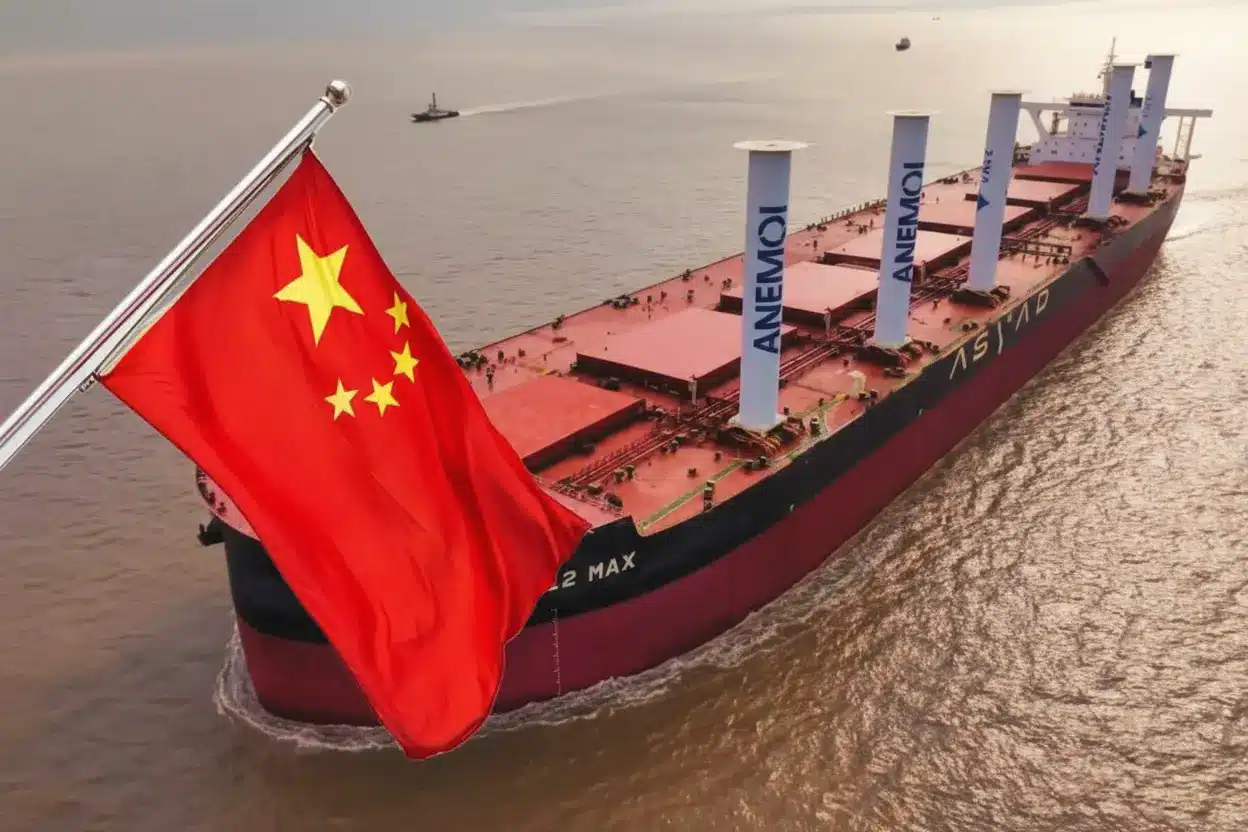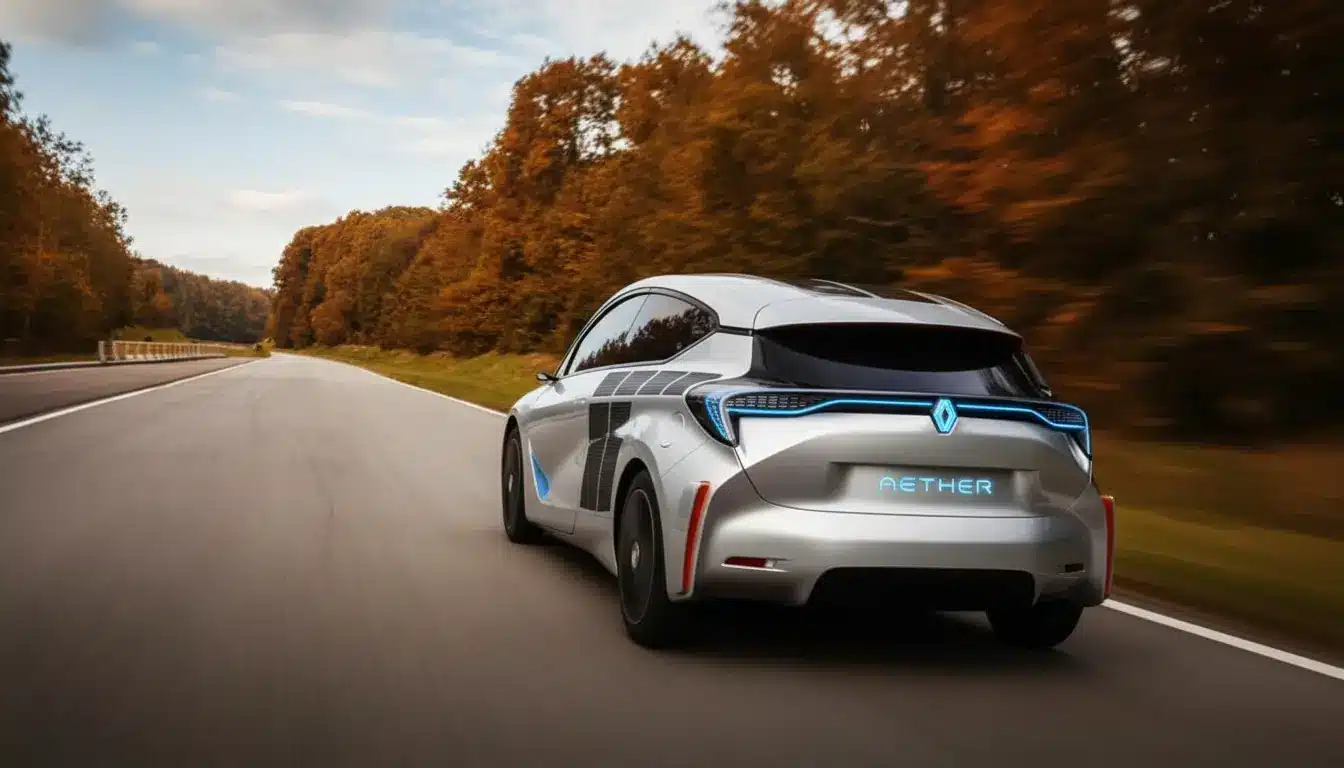Imagine a ship so colossal that it redefines what it means to be a titan of the seas, and now picture that same vessel cutting thousands of tons of fuel and emissions—all thanks to the wind. Welcome to the dawn of a new maritime era, with China taking center stage in a technological leap that promises to make our oceans a greener place.
The Giant Gets a Green Upgrade
Back in 2012, the Sohar Max burst onto the scene as one of the world’s largest mineral carriers, proudly sailing under the Valemax class. Fast-forward over a decade, and this seafaring behemoth isn’t just resting on its (considerable) laurels; it’s making waves with an upgrade that has everyone talking. This isn’t your average retrofit—this is a wind-assisted propulsion revolution aimed squarely at tackling the twin titans of energy efficiency and environmental impact.
Five Towering Rotors: The Heart of Innovation
In October 2024, Sohar Max made headlines at the COSCO shipyard in Zhoushan, China, when it received a truly groundbreaking installation: five immense rotor sails, each standing a whopping 35 meters high and five meters across. These aren’t props from a sci-fi movie. Designed by Anemoi Marine Technologies, a British firm with a knack for blending tradition and tech, these giant sails are engineered to harness the power of the wind, minimizing fossil fuel reliance and slashing CO2 emissions along the way.
But wait—there’s more! The real magic lies not just in the size of these sails but in the ingenious management system Anemoi devised. Each rotor can be deployed for optimal wind capture, then neatly retracted by folding it vertically when needed, especially during those busy cargo loading operations. This nifty trick ensures the Sohar Max doesn’t sacrifice any operational efficiency and that modern logistics run as smoothly as a quiet day at sea.
The Environmental and Economic Impact
This isn’t just tech for tech’s sake. Integrating these rotor sails has yielded impressive results aboard the Sohar Max. Estimates suggest that using the rotors could reduce annual fuel consumption by up to 6%. In practical terms, that’s a hefty chunk of change saved for the ship’s operators—not to mention an annual cut of around 3,000 tons in carbon emissions. Let’s be honest: that number isn’t just encouraging, it’s essential, underlining why investment in sustainable maritime solutions is no longer optional but crucial.
- Up to 6% less fuel consumption each year
- About 3,000 tons less CO2 released annually
- No loss of operational efficiency thanks to retractable systems
These are game-changing figures for an industry facing mounting pressure to clean up its act.
Trial Run: Proving It Works on the Open Seas
Of course, theory and practice are like high and low tide—they don’t always align. That’s why, after installation, the Sohar Max set sail for Tubarao, Brazil, embarking on a real-world shakedown to see just how the new wind tech performs under true maritime conditions. These ongoing trials aren’t just a formality; they’re key to fine-tuning performance and ensuring this ambitious project is more than a blueprint dream.
This transformational feat required a spirit of collaboration rarely seen on such a scale, uniting Brazilian mining giant Vale S.A., vessel owner Asyad from Oman, and the innovation-driven team at Anemoi Marine Technologies. Together, they’re sailing toward a shared goal: modernizing shipping fleets to meet global emission reduction targets and international standards like CII and EEDI/EEXI.
Charting a Greener Future for Shipping
Rotor sails are quickly winning fans among shipowners with eyes on carbon neutrality. Compact yet mighty, this technology offers a substantial push in the right direction, helping ships meet ever-tougher energy performance and emission standards. The Sohar Max’s new attire stands as a shining example in a global movement transforming the maritime sector into a haven for greener, cleaner shipping.
With Sohar Max blazing the trail, it’s not hard to imagine a future where advanced technologies not only boost efficiency but also dramatically shrink the environmental footprint of the world’s shipping lanes. Should these wind-assisted systems pass their real-world exams with flying colors, we could soon see them gracing hundreds of ships, sparking a radical rethink in how global transport tackles energy and emissions.
The message sailing out from China? The wind is changing—literally—and it’s carrying the shipping industry toward a cleaner horizon.

John is a curious mind who loves to write about diverse topics. Passionate about sharing his thoughts and perspectives, he enjoys sparking conversations and encouraging discovery. For him, every subject is an invitation to discuss and learn.





